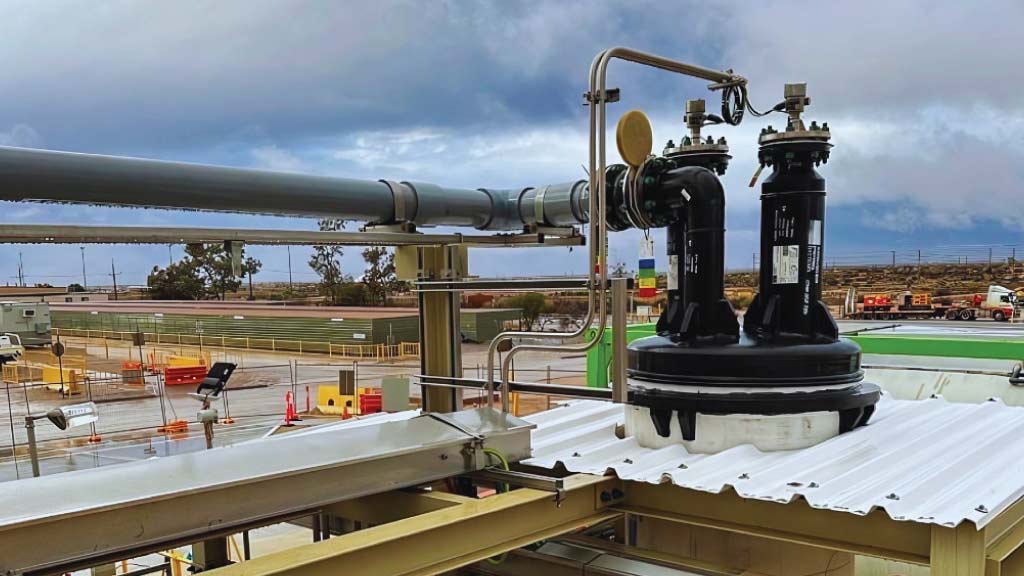Built Like a Tank! Another HDPE Prefabrication Success Story

With excellent chemical resistance, HDPE (or poly pipe) can be used in a wide range of chemical processes and applications. Recognising this, in late 2022, our specialist Fabrication team was selected to design, fabricate, and test a Hydrochloric Acid Unloading Priming Tank for a large multinational organisation.
An HDPE prefabrication success story
The tank – required for the safe and efficient unloading, storage, and transfer of hydrochloric acid – had to be custom-built to house many unique features and meet stringent safety standards. As Australia’s number one HDPE specialists, we were selected for this project thanks to our technical expertise, prior experience at the organisation’s work sites and ability to deliver the tank on time and budget. Here’s how we did it:
The (reverse) brief
Like many fabrication projects, the first stage involved working alongside our client, an engineering firm engaged by the organisation, to help them better understand what was required.
“They knew what they wanted, but they didn’t know how to get there”, said Paul Narancic, SA/NT’s Business Manager at Advanced Piping Systems.
“As trusted advisors, we spent a lot of time initially helping them understand what they needed.
“They also had quite specific requirements and required us to confirm that what they wanted could actually be done.”
Delivering a customised solution
Once the design for the tank had been approved, Advanced Piping Systems transitioned into the fabrication phase.
This involved engaging suppliers and subcontractors to construct the tank as per the design and to the required standards using butt welding and extrusion welding.
“The tank went through our custom fabrication facility to be manufactured,” Paul said.
“It was constructed using the same technology as we use for developing poly pipe systems, with some slight differences due to the fact that it is a closed vessel rather than an open pipeline or a long pipeline.
“But essentially, it’s the same product, the same material, with a customised solution.”
Special design features of the tank include custom probes on the interior for the suction and delivery of the hydrochloric acid and inspection points.
Unique challenges
No custom project would be complete without its own unique set of challenges.
The first was finding a way to shift and move the tank, which was made possible thanks to a custom lifting system.
“Polyethylene is not like steel, which is easy to put lifting points on – we had to design a customised lifting system with point loadings so that it could be moved around easily,” Paul said.
The tank also needed to be constructed with materials that met strict safety standards to ensure it was leak and explosion-proof to protect workers and the environment from hydrochloric acid contained within.
“This tank has 34 per cent hydrochloric acid going in it at a maximum ambient temperature of 51 degrees Celsius,” Paul said.
If hydrochloric acid comes into contact with metals, it produces hydrogen gas, which can lead to an explosion. According to Paul, this meant special consideration had to be given to the materials used in its construction, making HDPE’s inert properties a perfect choice.
“We constructed the tank entirely out of polyethylene, or polyethylene-coated steel – even the flanges.”
Understandably, the third challenge was adhering to the multinational organisation’s strict quality assurance (QA) standards.
“Meeting their quality control and quality assurance requirements was also a huge challenge,” Paul said.
“We had to customise all our internal testing documents to suit their format and templates – from inspection test plans to hydrostatic test documents.
“A lot of other businesses just wouldn’t do that – they’d put it in the ‘too hard’ basket.
“But really, this was just another one of the reasons they chose us for the project…because they knew we could deliver what they wanted.”
The project was pressure and load-tested by Advanced Piping Systems before finally being loaded onto a truck for delivery to our client.
“Our client was thankful that they had a supplier with our experience who was prepared to work with them, given the specifics of the job and the stringent QA requirements,” Paul said.
Let Advanced Piping Systems’ team of experienced fabricators help you achieve the best results for your project — no matter the size, industry, application or location.
Learn more about our HDPE prefabrication service here or contact our team for a quote today.

